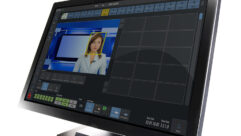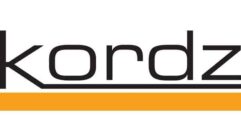A Glimpse of the Future
Aug 1, 2002 12:00 PM,
NATHANIEL HECHT
SOMETHING INTERESTING IS AFOOT AT NEIL GERSHENFELD’S WING of the MIT Media Lab (MML) in Cambridge, Massachusetts. The MML is a place where young engineers, graduate students, and professors with visions about an automated and connected future can experiment with fantastic results. Gershenfeld, who is the director of the MML’s Center for Bits and Atoms, said the project has a new building, which is slated to open in 2004. It will allow testing of a new connective technology that lets nearly everything in a building be connected to the Web.
Gershenfeld and crew, with some involvement from corporate sponsorships, want to develop a commercially viable version of this technology, and the new building will become an excellent real-world research laboratory to refine and enhance the many bits and pieces of the system. Gershenfeld envisions having every light switch, power outlet, thermostat, door lock access, security system — in short, everything that can be connected — controlled by a Web-based interface. The goal is to unify the frequently incompatible technologies used to control the modern building. That admirable goal will likely create an economy of scale in the construction process and will allow reconfigurable office spaces and greater degrees of safety. That sounds expensive, and it is. Gershenfeld and his group hope to develop the technology that will make it inexpensive and practical, which means many microprocessors.
Although the final product’s form may be different, the current method involves a unifying track (similar to track lighting) that provides power as well as two conductors for data. Devices equipped with the small computing devices developed in the lab can communicate with each other as well as take commands from outside the system. For example, when a switch is mounted on the track along with an outlet for AC, the two become aware of each other with a simple push of a button on each device. They exchange information about their address on the network, the nature of their functionality, and so on. Once that data has been exchanged, the AC outlet understands that the switch will control it. To expand upon that, when the track is connected through another device that allows Internet commands to be used, the command can travel down the same communication pathways and tell the AC outlet to turn off or on at will, bypassing the switch altogether. Whether the AC outlet is a thermostat, a security system, an air conditioner, or a motorized window blind, the power of the technology is obvious. With this system, a building can be reconfigured at will regardless of the location of power switches or outlets. Construction costs and design can be minimized because the system would require less time to design and be easier to install.
As exciting as this new technology is, there will likely be political complications when it comes to those installing the technology. This is the first example of a unified low- and high-voltage product in one package, and everyone knows how contentious it will be when it comes to the classic struggle between electrical contractors and low-voltage contractors. Let’s hope that some good solutions are in the works. If Gershenfeld’s vision of the connected future comes true, it might be a good idea to work on that electrician’s license right now!
For more information about the project, go to www.technologyreview.com.










